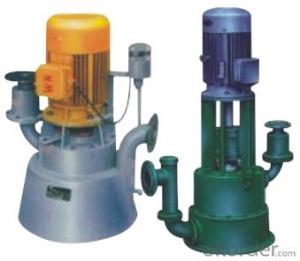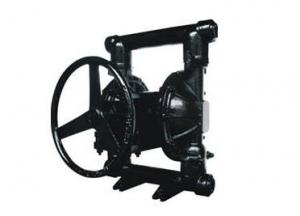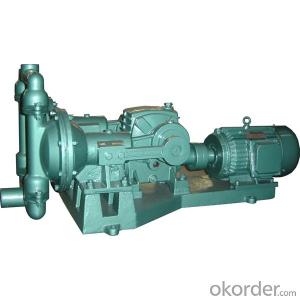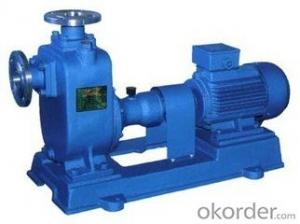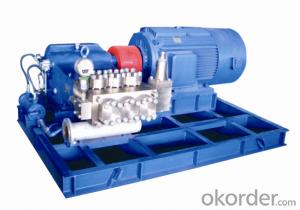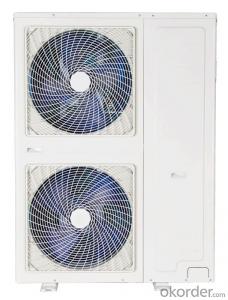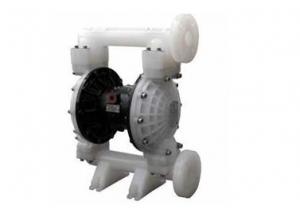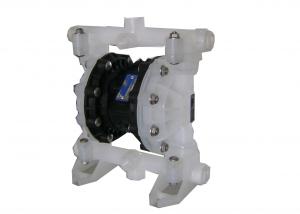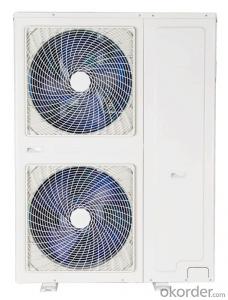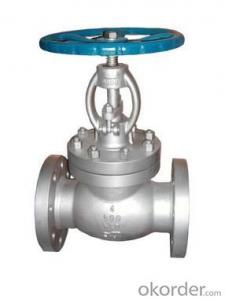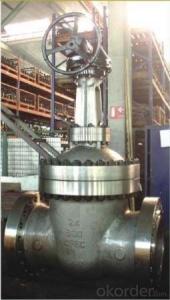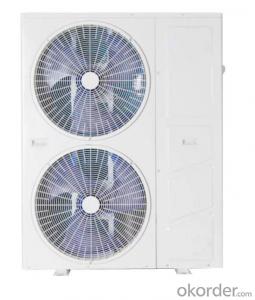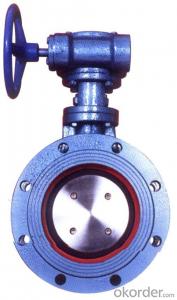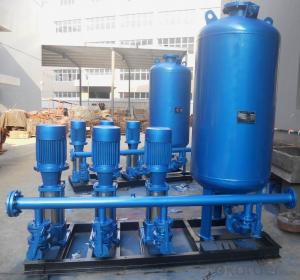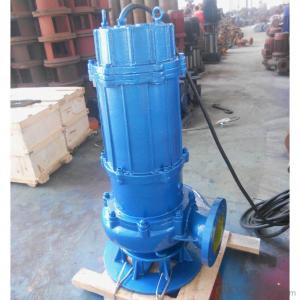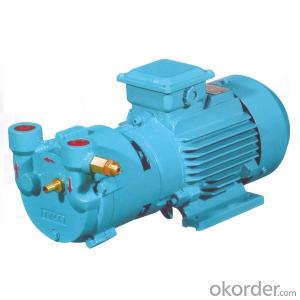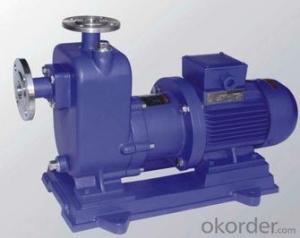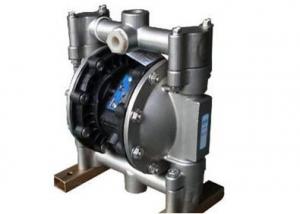WFB Series Non-Seal Self-Control Self-Suction Pump
- Loading Port:
- China Main Port
- Payment Terms:
- TT OR LC
- Min Order Qty:
- -
- Supply Capability:
- -
OKorder Service Pledge
Quality Product, Order Online Tracking, Timely Delivery
OKorder Financial Service
Credit Rating, Credit Services, Credit Purchasing
You Might Also Like
Outlined
WFB type no seal control self-suction pump, absorbs the domestic and foreign related products in the advanced experience of the foundation. Improved and innovative new product, is the traditional domestic products of the same products replace. The product has good resistance, stress and grinding, "for the first time, permanent drainage self-priming", etc. Products are cast iron, cast steel, stainless steel, reinforced polypropylene such as qualitative, five different modelling more than kinds of specifications.
Characterstics
1, the sealing is reliable. This pump USES no leak sealing devices, by secret sealing and with power of auxiliary seal. Instead of the traditional water pump of packing seal, mechanical seal, thoroughly solved the traditional sealed "run, run, drop, leakage", etc. The long axis submerged pumps, submerged pumps, submersible sewage pump and the most ideal products. 2, USES dynamic seal device. When running, no wear, the service life is a traditional product 10 times above; 3, power sealing device, lower cost 10 years for the operation cost of packing seal of 50%, for 70% of mechanical seal; 4, self-priming performance is stable and reliable, and especially the "electric air control valves", to achieve a truly "first drainage, permanent self-priming"
Application
Widely used in the electronics, electric power, chemical industry, metallurgy, medicine, food, fire control, environmental protection, electroplating, water purification, the municipal administration, the national defense, textile, mining, construction and other industries.
Working conditons
Flow: 0.75 6800 m3 / h
Head: 4-130 M
The liquid temperature: 40- 180 degree
Working pressure: The biggest 16 bar
WFB type no seal control self-suction pump, absorbs the domestic and foreign related products in the advanced experience of the foundation. Improved and innovative new product, is the traditional domestic products of the same products replace. The product has good resistance, stress and grinding, "for the first time, permanent drainage self-priming", etc. Products are cast iron, cast steel, stainless steel, reinforced polypropylene such as qualitative, five different modelling more than kinds of specifications.
Characterstics
1, the sealing is reliable. This pump USES no leak sealing devices, by secret sealing and with power of auxiliary seal. Instead of the traditional water pump of packing seal, mechanical seal, thoroughly solved the traditional sealed "run, run, drop, leakage", etc. The long axis submerged pumps, submerged pumps, submersible sewage pump and the most ideal products. 2, USES dynamic seal device. When running, no wear, the service life is a traditional product 10 times above; 3, power sealing device, lower cost 10 years for the operation cost of packing seal of 50%, for 70% of mechanical seal; 4, self-priming performance is stable and reliable, and especially the "electric air control valves", to achieve a truly "first drainage, permanent self-priming"
Application
Widely used in the electronics, electric power, chemical industry, metallurgy, medicine, food, fire control, environmental protection, electroplating, water purification, the municipal administration, the national defense, textile, mining, construction and other industries.
Working conditons
Flow: 0.75 6800 m3 / h
Head: 4-130 M
The liquid temperature: 40- 180 degree
Working pressure: The biggest 16 bar
- Q:How does the air pump spray the water gun (the principle of the car spray gun)?
- The water gun is provided with a switch for controlling the work of the air pump. As long as the air pump works, the compressed air will siphon out the siphon. It uses the principle of siphon. When working, the air pump will squeeze water into a small tube, then spray it from the nozzle of the water gun. By adjusting the nozzle, the flow can be adjusted to a cluster current.
- Q:Are air pumps suitable for inflatable advertising spheres?
- Yes, air pumps are suitable for inflating and maintaining the shape of inflatable advertising spheres. They provide a quick and efficient method for inflating these spheres, ensuring they stay inflated for extended periods of time during promotional events or marketing campaigns.
- Q:Yesterday I bought a small fish tank and raised some tropical fish, but today the bottom of the fish tank has lots of fish droppings, and the water quality looks very muddy. I heard that the filter can play a clear role in water quality But I think the aquarium is relatively small, so the filter should take up many places. Is it necessary for an expert to use these two?
- Small tanks require the use of filters and oxygen pumps. This can greatly reduce the artificial burden of feeding. Let's take a look at what these two things play in a small fish tank:1, small fish in normal life will continue to breathe, reduce the dissolved oxygen content in water, in natural waters, because the surface area of water contact with the air, oxygen can quickly dissolved into the water to supplement. But in a small bowl, because the water and air contact area is small, and the feeding density is relatively high, so the content of dissolved oxygen decline will be relatively fast, once dropped to below 3ppm, the fish will continue to float, did not improve the fish will die. Oxygen pumps can increase water contact with air, increasing the rate of oxygen dissolution.2, the residual fish food, fish feces will decompose and decay under the action of microorganisms, forming ammonia and nitrite substances which are toxic to fish. When the concentration of ammonia nitrogen is greater than 0.02ppm or the concentration of nitrite is greater than 0.2ppm. Fish die of poisoning. The filter allows the flow of water to pass through the filter material, so that the nitrifying bacteria on the filter material oxidize the substance to form a basically non-toxic nitrate.If you do not have these two devices we can only rely on water for fish, more frequent to hypoxia and harmful substance accumulation, with these two devices can greatly reduce the frequency of the water, reduce the burden of artificial feeding.
- Q:What are the different pressure measurement units used in air pumps?
- There are several different pressure measurement units used in air pumps depending on the region and application. The most commonly used units are pounds per square inch (psi), bar, kilopascal (kPa), and atmosphere (atm). Pounds per square inch (psi) is the most widely recognized unit for pressure measurement and is commonly used in North America. It represents the force exerted by one pound of force on an area of one square inch. This unit is often used in automotive and industrial applications. Bar is a unit of pressure commonly used in Europe, particularly in metric countries. It is defined as 100,000 pascals, which is equivalent to approximately 14.5 psi. Bar is frequently used in the measurement of tire pressure and in industrial settings. Kilopascal (kPa) is the standard unit of pressure in the International System of Units (SI). It is equal to one thousand pascals and is used globally in scientific and engineering applications. Kilopascals are often used in air pump gauges for measuring pressure. Atmosphere (atm) is a unit of pressure that represents the average pressure exerted by the Earth's atmosphere at sea level. It is approximately equal to 14.7 psi or 101.3 kilopascals. The atmosphere unit is commonly used in weather forecasting and for comparing gas pressures. In addition to these commonly used units, other pressure measurement units such as torr, millibar, and pascal are also used in certain specific applications. It is important to ensure that the pressure unit being used is compatible with the air pump being used to accurately measure and control the pressure.
- Q:How does an air pump prevent water contamination in hydroponic systems?
- An air pump prevents water contamination in hydroponic systems by supplying a continuous stream of oxygen to the water reservoir. In a hydroponic system, plants are grown without soil, and the roots are submerged in a nutrient-rich water solution. This water needs oxygen to sustain plant growth and prevent the growth of harmful bacteria and pathogens that can contaminate the water. The air pump works by pushing air through a tube or diffuser into the water reservoir. As the air bubbles rise to the surface, they create agitation and movement in the water. This movement helps to increase the oxygen exchange between the air and water, ensuring that the water remains oxygenated. The oxygenation provided by the air pump helps to promote healthy root growth and prevents the roots from becoming waterlogged, which could lead to root rot and other diseases. Additionally, the increased oxygen levels create an environment that is unfavorable for the growth of harmful bacteria and pathogens, reducing the risk of water contamination. Overall, an air pump plays a crucial role in maintaining the water quality in hydroponic systems by providing the necessary oxygenation to the water reservoir and preventing water contamination.
- Q:Can air pumps be powered by batteries?
- Indeed, batteries can serve as a source of power for air pumps. The market offers a variety of portable air pumps that are specifically designed to run on batteries. These battery-operated air pumps are commonly utilized for inflating various objects, including air mattresses, inflatable boats, swimming pool toys, and sports balls. They prove to be particularly convenient for outdoor use or in locations where access to a power socket is limited. Battery-powered air pumps typically come equipped with either rechargeable batteries or the option to use disposable ones. To ensure compatibility with batteries and to understand the battery life and charging prerequisites, it is essential to consult the manufacturer's specifications and instructions.
- Q:Are there air pumps suitable for medical use?
- Yes, there are air pumps specifically designed and suitable for medical use. These air pumps are often used for medical devices such as compression stockings, inflatable splints, or air mattresses for patients with limited mobility or who require pressure relief.
- Q:Can an air pump be used for inflatable theater sets?
- Yes, an air pump can be used for inflating theater sets. Air pumps are commonly used to inflate various types of inflatable structures, including theater sets. They provide a quick and efficient way to inflate large-scale props and backdrops, allowing for easy setup and reusability.
- Q:Can an air pump be used for inflatable arches?
- Yes, an air pump can be used for inflatable arches. In fact, it is the most common method used to inflate them quickly and efficiently.
- Q:Can an air pump be used for inflating air mattresses with built-in speakers?
- Indeed, an air pump is capable of inflating air mattresses that come equipped with built-in speakers. Specifically designed for the purpose, the air pump efficiently and swiftly inflates air mattresses, regardless of the presence of built-in speakers. Typically positioned on the sides or top of the air mattress, the speakers do not disrupt the inflation procedure. Consequently, you can utilize an air pump to achieve the desired level of firmness in the mattress without any impact on the speakers.
1. Manufacturer Overview |
|
|---|---|
| Location | |
| Year Established | |
| Annual Output Value | |
| Main Markets | |
| Company Certifications | |
2. Manufacturer Certificates |
|
|---|---|
| a) Certification Name | |
| Range | |
| Reference | |
| Validity Period | |
3. Manufacturer Capability |
|
|---|---|
| a)Trade Capacity | |
| Nearest Port | |
| Export Percentage | |
| No.of Employees in Trade Department | |
| Language Spoken: | |
| b)Factory Information | |
| Factory Size: | |
| No. of Production Lines | |
| Contract Manufacturing | |
| Product Price Range | |
Send your message to us
WFB Series Non-Seal Self-Control Self-Suction Pump
- Loading Port:
- China Main Port
- Payment Terms:
- TT OR LC
- Min Order Qty:
- -
- Supply Capability:
- -
OKorder Service Pledge
Quality Product, Order Online Tracking, Timely Delivery
OKorder Financial Service
Credit Rating, Credit Services, Credit Purchasing
Similar products
New products
Hot products
